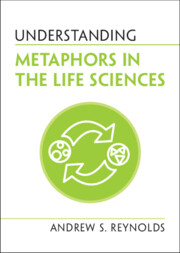Book contents
- Understanding Metaphors in the Life Sciences
- Series page
- Understanding Metaphors in the Life Sciences
- Copyright page
- Additional material
- Dedication
- Contents
- Foreword
- Preface
- Acknowledgements
- 1 Metaphors and Science
- 2 Background Metaphors
- 3 Genes and Genomes
- 4 Proteins
- 5 Cells
- 6 Evolution
- 7 Ecology
- 8 Biomedicine
- Concluding Remarks
- Summary of Common Misunderstandings
- References
- Index
7 - Ecology
The Balance of Nature, Niches, Ecosystem Health, and Gaia
Published online by Cambridge University Press: 11 April 2022
- Understanding Metaphors in the Life Sciences
- Series page
- Understanding Metaphors in the Life Sciences
- Copyright page
- Additional material
- Dedication
- Contents
- Foreword
- Preface
- Acknowledgements
- 1 Metaphors and Science
- 2 Background Metaphors
- 3 Genes and Genomes
- 4 Proteins
- 5 Cells
- 6 Evolution
- 7 Ecology
- 8 Biomedicine
- Concluding Remarks
- Summary of Common Misunderstandings
- References
- Index
Summary
Darwin’s evolutionary view of life emphasized change over stasis. The older creationist account, meanwhile, supposed that species of plant and animal had been specially designed to fit perfectly the environments in which they live, and there was little reason therefore for them to change at all. Aside perhaps from the intermittent earthquake, volcanic eruption, massive flood, or other rare catastrophe, they were assumed to live in a stable environment. But Darwin had been convinced by Charles Lyell’s uniformitarian account of geology that the earth is in a constant state of change, and as a consequence species will have to adapt if they are to maintain a good fit to their surroundings. Over long periods of time, new islands rise up from the depths of the ocean due to volcanic activity, or sink as the ocean floor shifts; mountains rise and fall; periodic cooling and warming of the planet causes ice sheets and glaciers to expand and contract, leaving behind new lakes or deserts. So species evolve, migrate, or go extinct.
- Type
- Chapter
- Information
- Understanding Metaphors in the Life Sciences , pp. 117 - 138Publisher: Cambridge University PressPrint publication year: 2022

